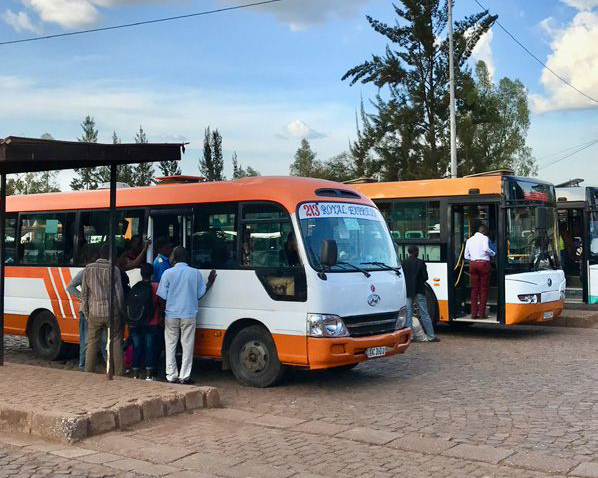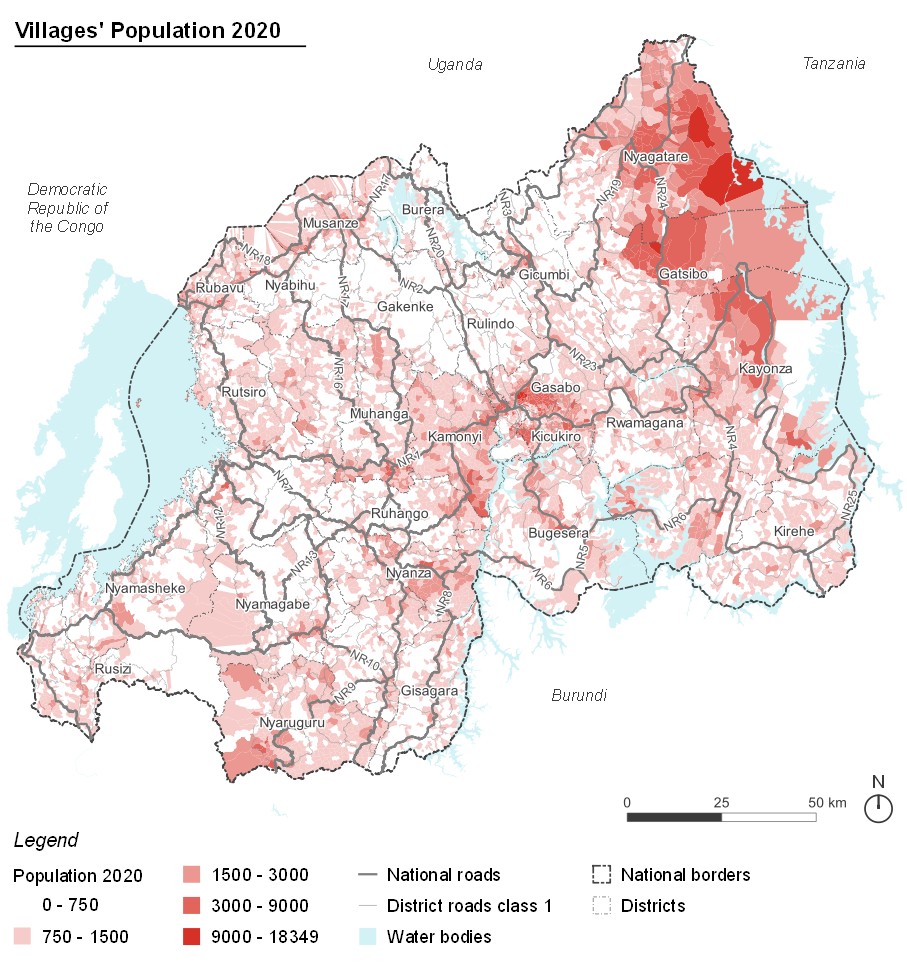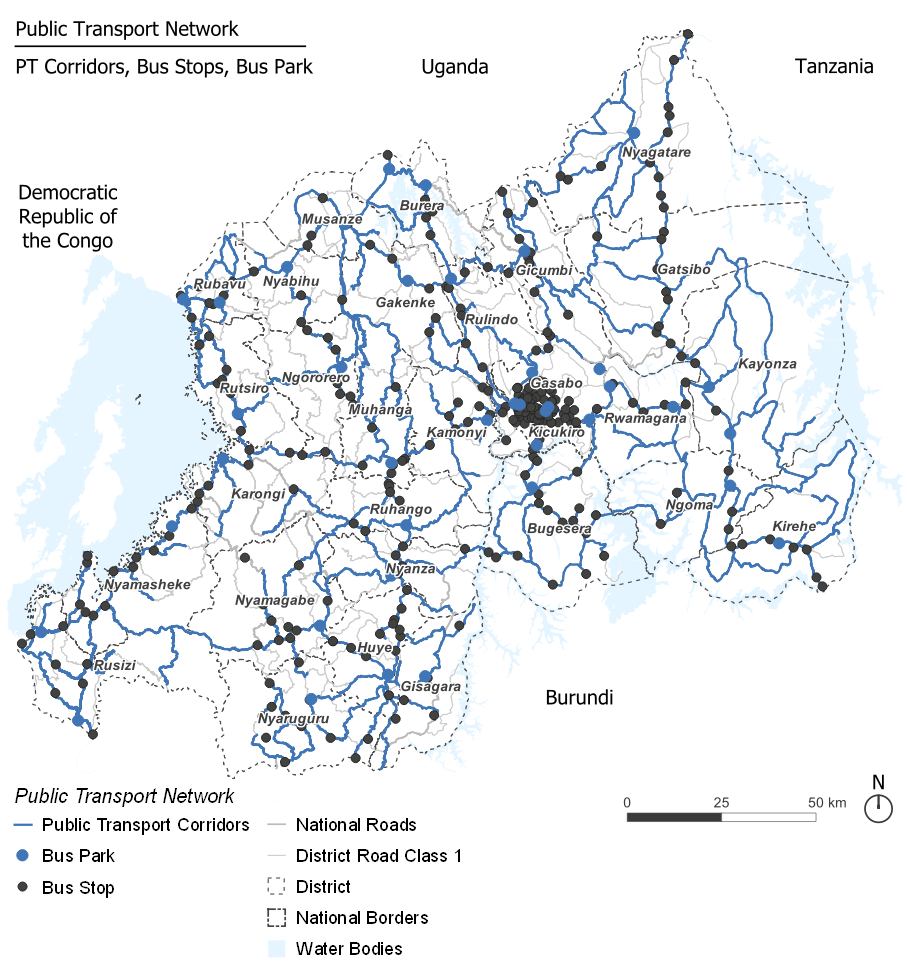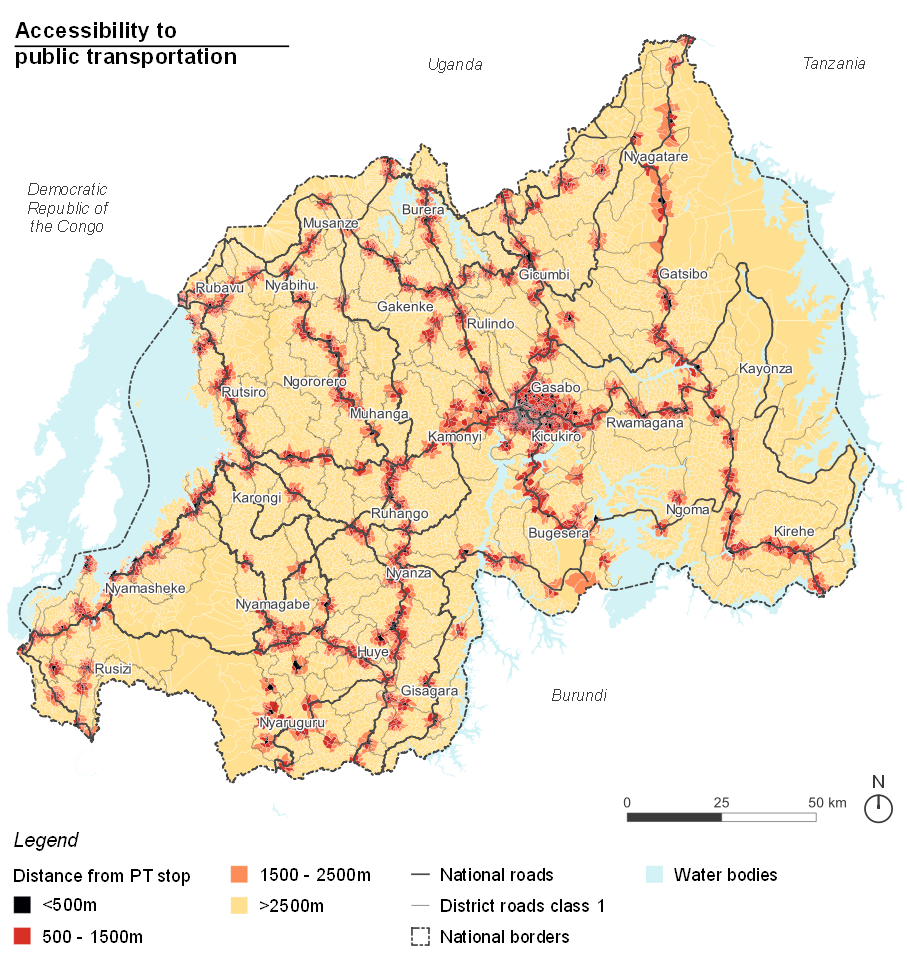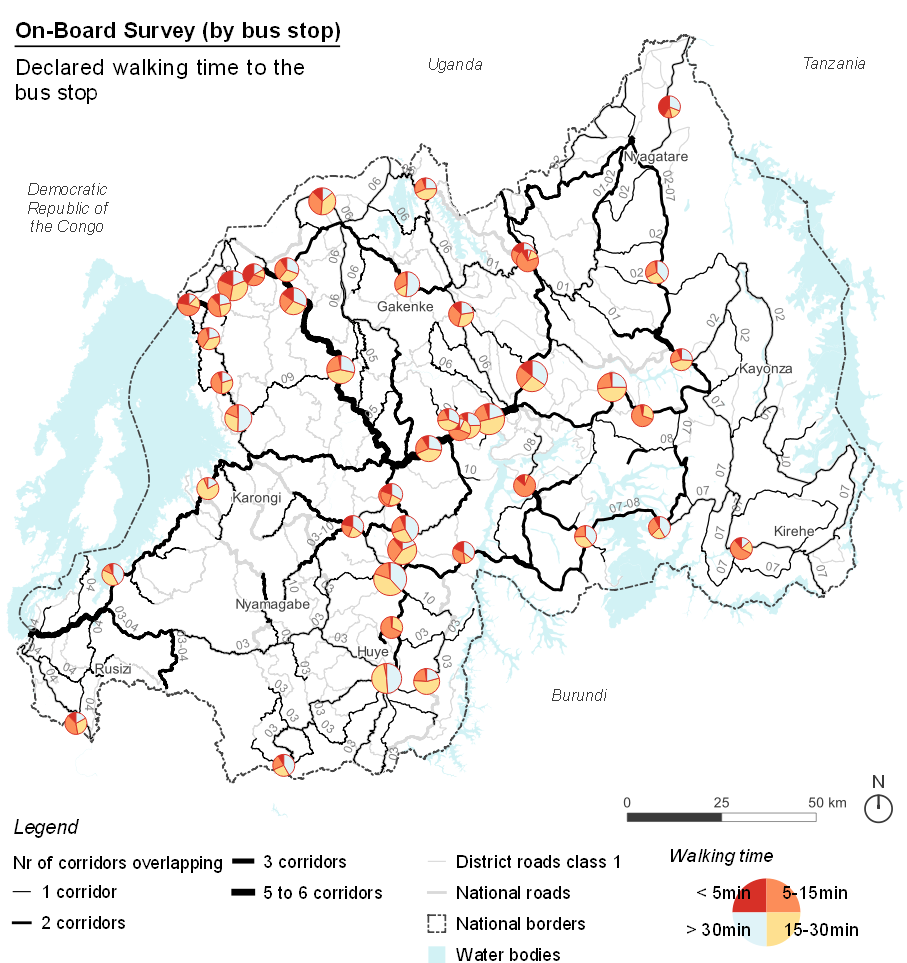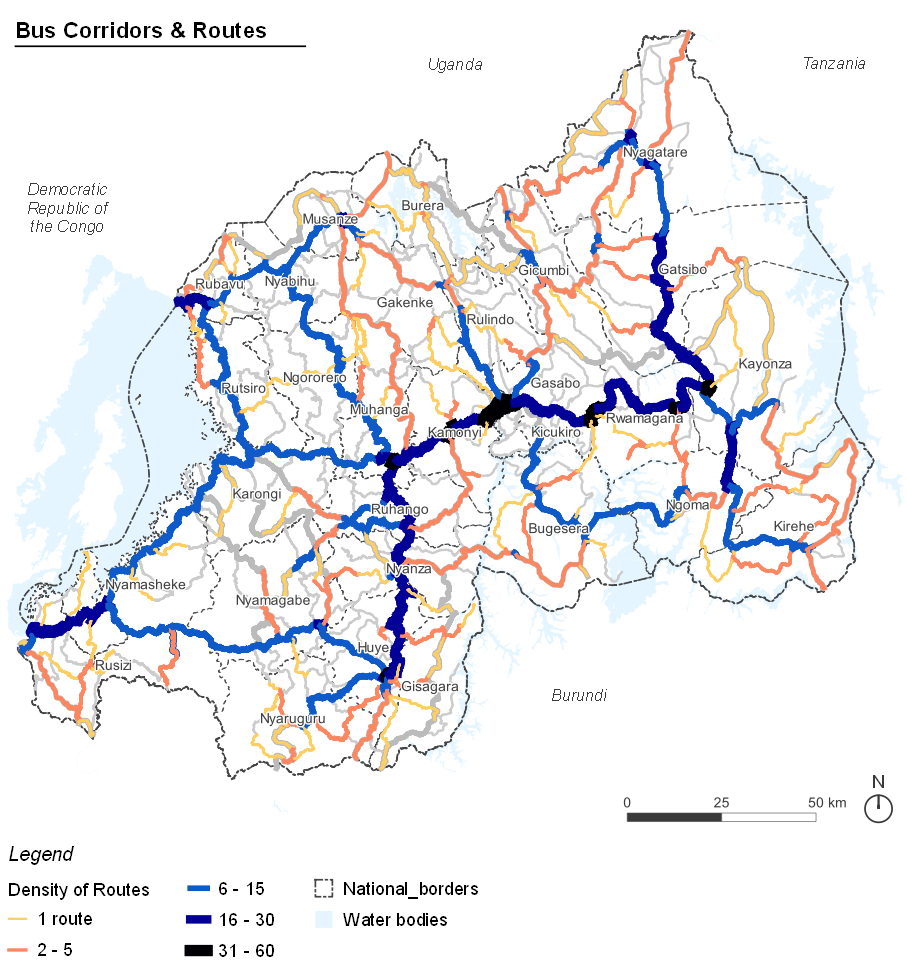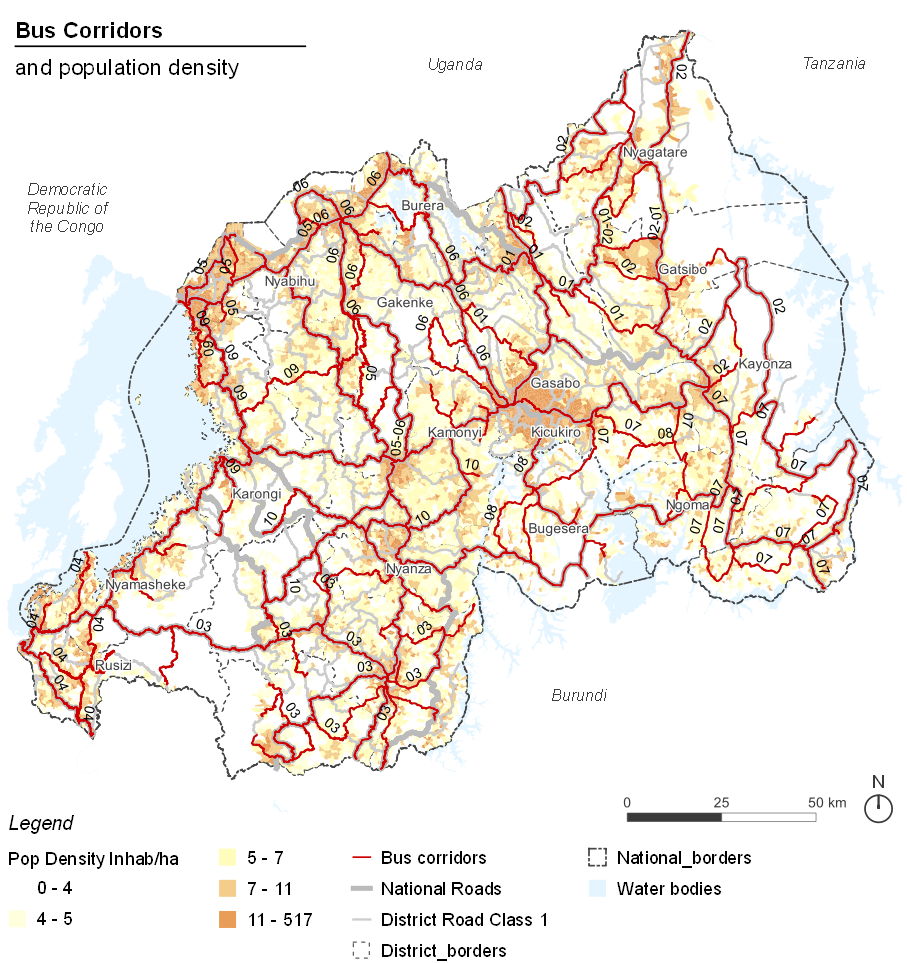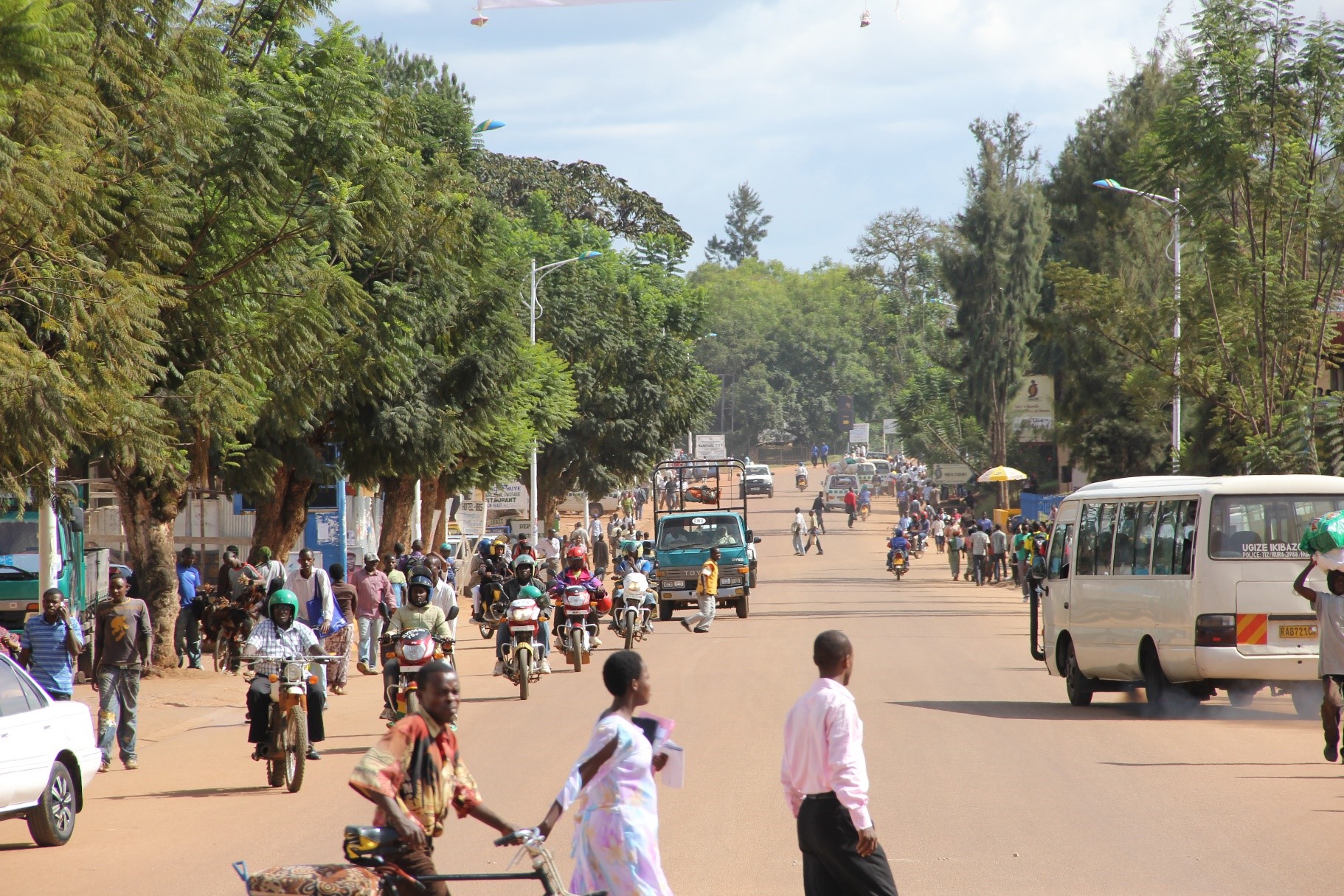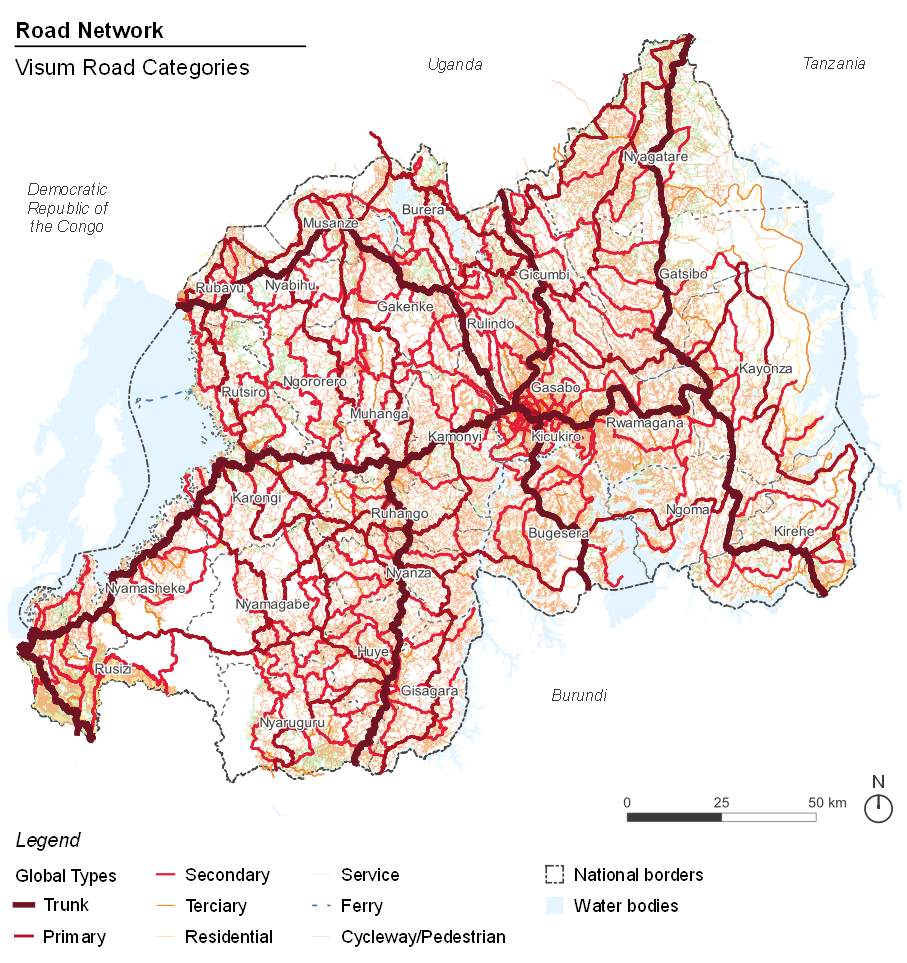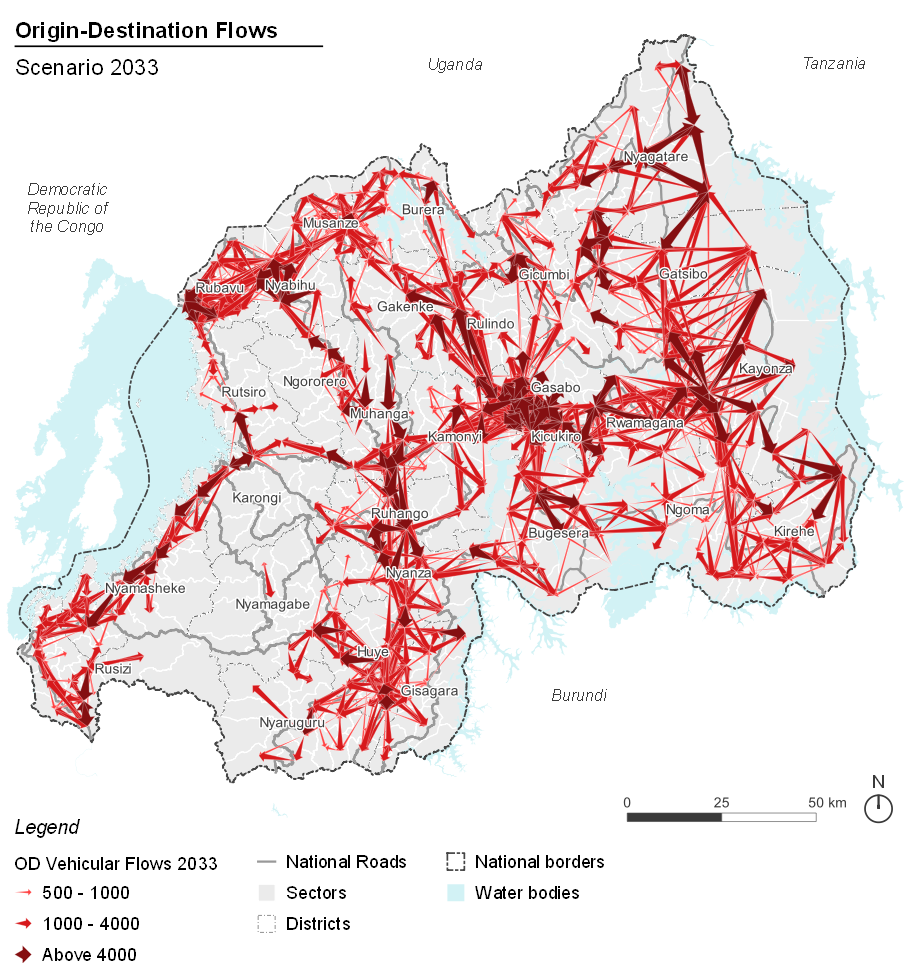Business Models for Rwanda’s Public Transport Services
Rwanda
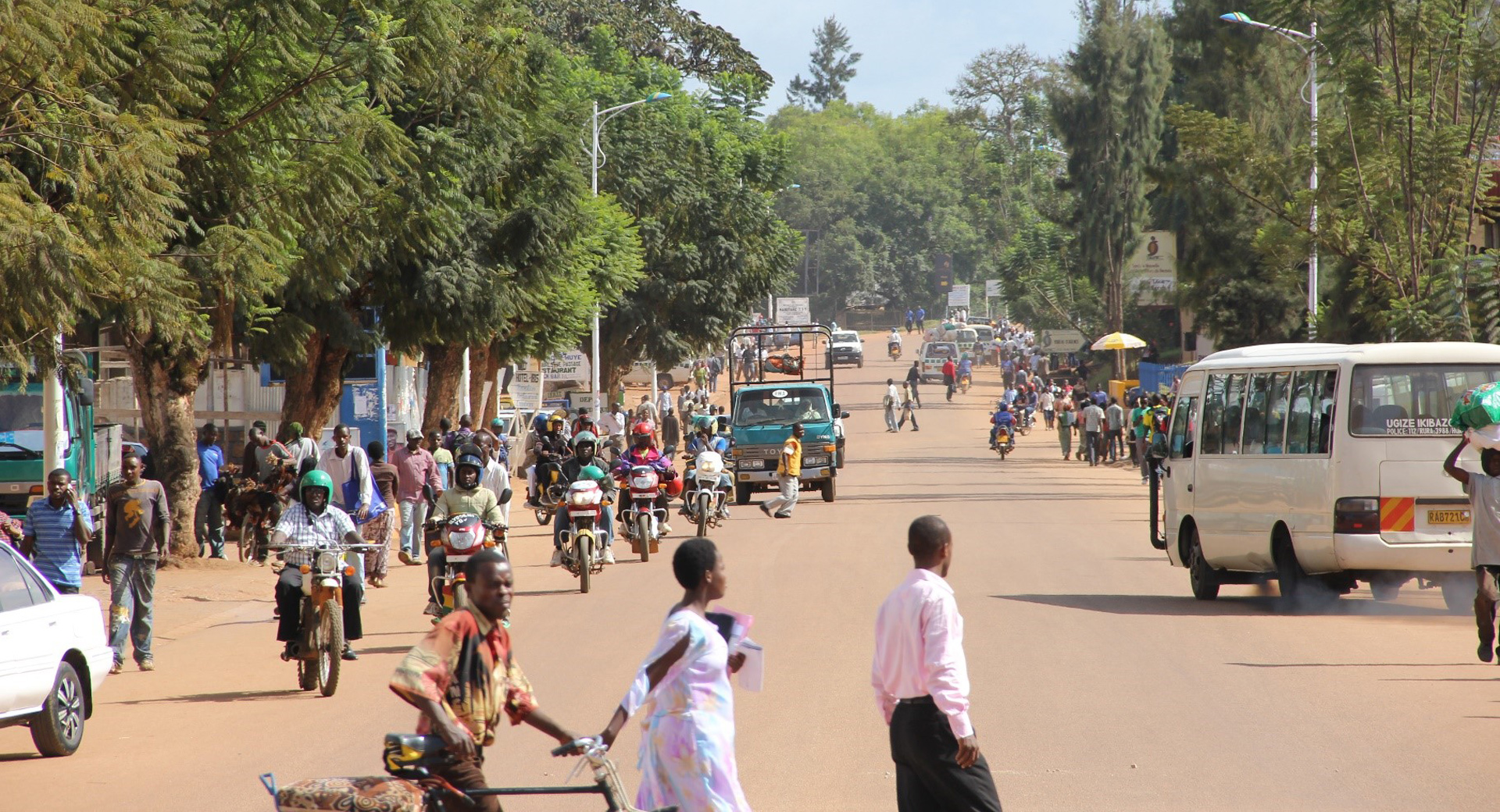
In 2018 Rwanda Ministry of Infrastructure (MININFRA) assessed the accessibility of the Rwanda population to basic facilities. That study showed that Rwanda’s rural communities and interurban centres require better connection to the centres of economic activity, healthcare, education, and other “lifeline” services.
The Government of Rwanda has been working to address the country’s transport challenges and, between 2013 and 2020, conditions significantly improved in the City of Kigali. With this new study (commissioned in 2021 and executed between 2021 and 2024), the government aims to provide workable, sustainable, operational and business improvements to bus services in intercity and rural areas.
The study provides multiple elements of innovation for Rwanda’s national public transport system:
• A transit service led by demand;
• A fare system that encourages multi-leg travel and the unlocking of more origin/destination pairs;
• More optimised operations and management of economic resources;
• Significant improvements in the quality of infrastructure by establishing new minimum criteria for transit facilities;
• A focus on quality of service offered rather than the need for profit making;
• An alternative governance model for the sector.
Rwanda’s population in 2022 was around 13.2 million people, 37.8 % of which is mobile, meaning that approx. 5 million people perform trips regularly. The study estimated an additional demand of 2.6 million people that would manifest over time should the right conditions materialise. This led to an estimate of 1.6 billion public transport trips/year growing to potentially 2.4 billion trips/year by 2033.
Three alternative route plans were conceived on the basis of travel demand predictions, degree of change from status quo, Operating Expenditure (OpEx) and Capital Expenditure (CapEx) to deliver increasing supply, leading to a doubling of the production per capita.
An articulated set of investments in rolling stock and facilities was outlined in the study under different implementation scenarios, each with its associated road map.
This growth plan was also assessed from a financial standpoint to outline the maximum liability for the government needed to support the countrywide access to transportation in relation to its debt service capacity and a supporting tool was provided for decision makers.
Location
Rwanda
Client
Rwanda Transport Development Agency
Main expertise
Regional & Urban Transport Planning; Transport and Traffic Modelling; Public Transport Operations; Transport Economics
PROJECT HIGHLIGHTS
- Viable and sustainable operational and commercial improvements to bus services in intercity and rural areas
- A study of national Rwanda's transport demand and a forecast up to 2033
- Analysis and modelling of the country's transport infrastructure and supply
- A business model to support government decision-making
Project gallery
Our contribution
MIC-HUB led the project through all its phases.
During the diagnostic phase, MIC-HUB and Zurka Ltd executed an unprecedented amount of 13,000 interviews with bus operators, transit passengers and households, together with observations of traffic volumes and bus occupancy, which fed a sophisticated strategic transport model developed at national level specifically for the purpose. The transport demand was developed with the granularity of the sectors.
A spatial analysis of the country’s infrastructure and transit supply was developed in GIS with the support of ESRI Rwanda and handed over to Rwanda Transport Development Agency for enhanced monitoring and planning.
The findings of the transport model constituted the basis for the definition of transport supply scenarios, which were developed with a single route level of detail in order to quantify expected investments in rolling stock, workforce and energy consumption.
Following this, econometric and financial analysis was developed to support each scenario with the relevant KPIs. Finally, a versatile transport planning and financial model tool was set up and delivered to allow decision makers to exert their judgment and action on the sector.
